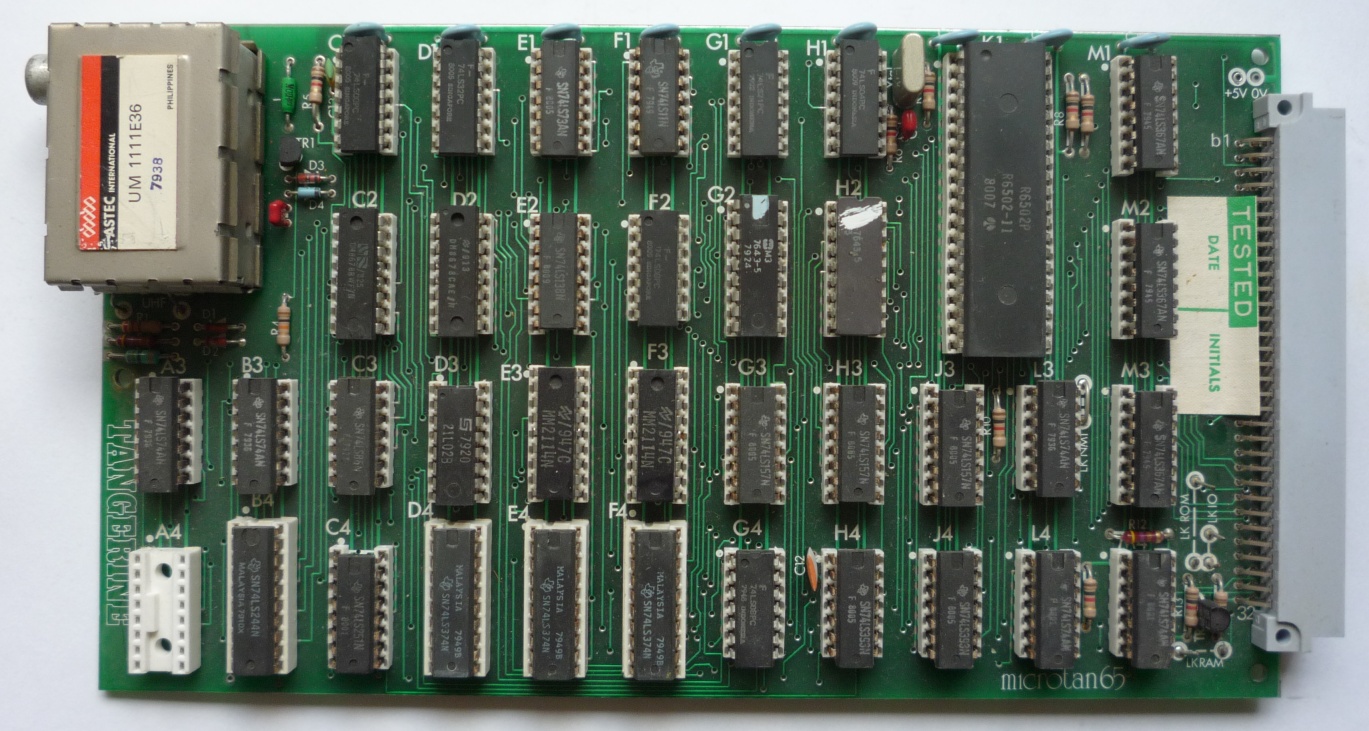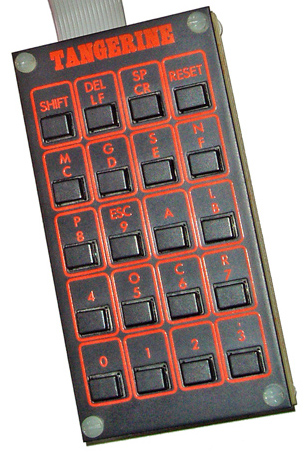In 1979, whilst at University, I bought my first “computer”, a Tangerine Systems Microtan 65. It cost about £70, came as a kit of parts, and although I had not done much soldering beforehand it worked first time! After a couple of days of intensive programming in hex, my girlfriend did not seem to understand my excitement when I called her to look at my achievement… I had “Hello Bob!” flashing at a precise 1Hz on my screen. Girls, eh?!
Looking back it is quite amazing what we used to do with such boards, when you consider the capabilities of today’s technology.
Photos from www.microtan.ukpc.net
Mainboard
The Microtan 65 comprised a Eurocard PCB, with 6502 processor running at 750kHz, 1K of RAM, 1K of ROM for the monitor program TANBUG, and a 20-key hexadecimal keypad.
It had a UHF modulator to feed out to a TV display, giving 16 rows of 32 characters and amazingly also had a “chunky graphics” option giving 64×64 blocks.
I/O was mapped into the normal memory space and was used for reading the keypad, toggling the chunky graphics on/off, and supported a hardware single step facility when running programs.
Tanbug Monitor
The simple 1K monitor TANBUG and a hex keypad (left) was all it took to make some pretty clever programs. Well they seemed pretty amazing at the time, especially as the 1K RAM had to support variables, the stack, and the screen, as well as programs.
Single character “commands” were provided to manipulate memory, registers, and breakpoints, and to run or single-step programs.
When I wrote my emulator for the Microtan 65 (see below) I included an assembler and tested it by re-assembling the TANBUG code. The fully commented listing is here and shows all available commands.
TANEX Expansion Board
The second board in the Microtan system was another Euro-sized card providing an extension to the monitor called XBUG, space for 7K static RAM, five lots of EPROMs, a couple of 6522 VIA (Versatile Interface Adapters) and a 6551 UART (Universal Asynchronous Receiver/Transmitter) providing a cassette interface.
I could not afford one at the time, but found a defunct TANEX empty board at a computer fair for £3. Some hours of searching found two tracks on the board joined (a bad PCB etching) a quick scrape with a knife and voilà with a few chips I had a very low cost TANEX board. The simple assembler and disassembler in the XBUG EEPROM was a god send having spent a year working entirely in hex.
A mini-backboard with two Euro-connectors allowed the M65 and TANEX to be connected into a mini-system.
Microsoft BASIC Interpreter
A few months later, a friend and I pooled our meagre monies and bought the 10K Microsoft Basic ROMs (2x4K, 1x2K). I had built a little board that could burn EPROMs and that came in handy! With a full board of memory and an old non-ASCII keyboard, another computer fair acquisition, that I converted to ASCII by mapping its outputs through an EPROM “translator” and we were rocking.
Emulator
Sadly I sold all the hardware just before I left University. It would have been fun to play with it today. In a moment of nostalgia, in 1999 I started writing a Microtan 65 emulator in Pascal using Borland Delphi 3. It has developed over the years, and later I ported it to Lazarus/Free Pascal Compiler. You can find details of this emulator here.
References / Resources
- Websites
- Alan’s Microtan 65 web-pages (http://www.microtan.ukpc.net)
- Geoff Macdonald’s Microtan 65 pages (http://geoff.org.uk/microtan)
- Manuals
- Microtan 65 User Manual, includes TANBUG V2 [PDF]
- TANEX User Manual [PDF]
- XBUG User Manual [PDF]
- Microtan BASIC User Manual [PDF]
- Tanbug Source Code Listing
- Files on Titan:
/Archive_Jekyll/files/computer/machine-microtan-65/…- Emulators, including source code and some games
- Space Invasion (Home Computing magazine extract) [PDF]




